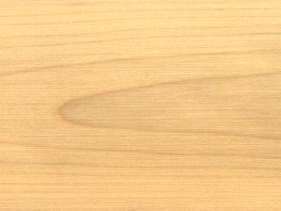
Black tupelo (Nyssa sylvatica)
Family: Cornaceae
Common names: Black gum, Black tupelo, Chan thip, Lau tau, Mascalwood, Pepperidge, Resak, Sourgum, Taungsagaing, Tupelo, Tupelo gum
Distributed in: United States (North America)
Distribution overview: The growth range of Black tupelo in North America includes Ontario, Alabama, Arkansas, Connecticut, Delaware, Florida, Georgia, Indiana, Kansas, Kentucky, Louisiana, Massachusetts, Maryland, Maine, Michigan, Missouri, Mississippi, North Carolina, Great Smoky Mountain National Park, Illinois, New Hampshire, New Jersey, New York, Ohio, Oklahoma, Pennsylvania, Rhode Island, South Carolina, Tennessee, Texas, Virginia, Vermont, Wisconsin, and West Virginia. The tree is often found in hardwood and pine forests and prefers moist soils of valleys and uplands.
Common uses: Baskets, Chairs, Chests, Concealed parts (Furniture), Cooperages, Core Stock, Crossties, Decorative veneer, Desks, Dining-room furniture, Dowell pins, Dowells, Drawer sides, Factory flooring, Figured veneer, Fine furniture, Floor lamps, Flooring, Food containers, Furniture , Furniture components, Furniture squares or stock, Hatracks, Kitchen cabinets, Living-room suites, Office furniture, Pallets, Plain veneer, Pulp/Paper products, Pulpwood, Radio - stereo - TV cabinets, Railroad ties, Rustic furniture, Stools, Sub-flooring, Tables , Utility furniture, Veneer, Wardrobes
Product sources: Supplies of Black tupelo plentiful, and the material is readily available, especially in the Eastern United States, at inexpensive prices.
Environment profile: Abundant
May be rare in parts of its range, especially along the periphery
Tree size: Trunk diameter is 100-150 cm
Colors: the heart isRed, Yellowand the sapwoodWide, Yellow.The grain isModerately to severely interlocked, the textureUniformand the lusterMedium
Natural durability: Resistant to termites, Susceptible to insect attack
Odor: No specific smell or taste
Kiln Schedules: T6 - H2 (4/4) US
Drying Defects: Interlocked grain may cause severe warping and distortion , Water pockets
Ease of Drying: Stack timber carefully to minimize degrade
Blunting Effect: Medium effect
Boring: Easy
The wood bores easily. (Percent of pieces yielding good to excellent pieces in boring = 82)
Cutting Resistance: Medium cutting resistance
Gluing: Good gluing properties
Mortising: Very poor mortising properties
Mortising properties are very poor. (Number of fair to excellent pieces out of one hundred = 24)
Moulding: Responds poorly to mortising
The timber responds poorly to moulding. (Perecnt of pieces producing good to excellent in moulding = 32)
Movement in Service: Responds poorly to mortising
The timber responds poorly to moulding. (Perecnt of pieces producing good to excellent in moulding = 32)
Nailing: Difficult to nail, Pre-boring recommended
Planing: Special attention required
Resistance to Impregnation: Resistant sapwood
Response to hand tools: Somewhat difficult to work with hand tools
Sanding: Very poor response to sanding
Number of pieces out of one hundred yielding good to excellent sanding results = 21
Steam bending: Very poor
Percent of unbroken pieces = 42
Screwing: Possible if prebored
Number of screwed pieces free from complete splits = 63
; Turning: Somewhat difficult to turn
Number of fair to excellent pieces out of one hundred = 79
Painting: Very Good to Excellent;
- Numerical data Metric
- Numerical data English
- Strength properties
- References
 |
 |
 |
 |
| Item |
Green |
Dry |
Metric |
| Specific Gravity |
0,42 |
0,46 |
|
| Density |
|
|
kg/m3 |
| Bending Strength |
482 |
661 |
kg/cm2 |
| Crushing Strength |
33 |
64 |
kg/cm2 |
| Hardness |
|
360 |
kg |
| Impact Strength |
73 |
55 |
cm |
| Shearing Strength |
|
92 |
kg/cm2 |
| Stiffness |
70 |
82 |
1000 kg/cm2 |
| Tangential Shrinkage |
9 |
|
% |
| Radial Shrinkage |
5 |
|
% |
| Weight |
673 |
528 |
kg/m3 |
| Maximum Load |
0,42 |
0,56 |
cm-kg/cm3 |
| Toughness |
|
|
cm-kg |
| Static Bending |
|
|
kg/cm2 |
|
 |  |  |  | | Item | Green | Dry | English | | Bending Strength | 6860 | 9408 | psi | | Crushing Strength | 470 | 911 | psi | | Hardness | | 794 | lbs | | Impact Strength | 29 | 22 | inches | | Maximum Crushing Strength | 2979 | 5410 | psi | | Shearing Strength | | 1313 | psi | | Stiffness | 1009 | 1176 | 1000 psi | | Work to Maximum Load | 6 | 8 | inch-lbs/in3 | | Specific Gravity | 0.42 | 0.46 | | | Weight | 42 | 33 | lbs/ft3 | | Radial Shrinkage | 5 | | % | | Tangential Shrinkage | 9 | | % | | Volumetric Shrinkage | 14 | | % | |
Resists denting and marring
Hardness = medium
Compression strength (parallel to grain) = medium
Bending strength (MOR) = medium
Weight is about average.
Boone, R.S., C.J. Kozlik, P.J. Bois and E.M. Wengert. 1988. Dry Kiln Schedules for Commercial Woods: Temperate and Tropical. United States Department of Agriculture, Forest Service, Forest Products Laboratory, General Technical Report FPL-GTR-57, Madison, Wisconsin.Kline, M. 1985. Nyssa sylvatica - Blackgum. In A Guide to Useful Woods of the World. Flynn Jr., J.H., Editor. King Philip Publishing Co., Portland, Maine. 1994. Page 245.Little, E.L.1980.The Audubon Society Field Guide to North American Trees - Eastern Region.Published by Arthur A. Knopf, New York.Panshin, A.J. and C. deZeeuw. 1980. Textbook of Wood Technology, 4th Edition. McGraw-Hill Series in Forest Resources. McGraw-Hill Book Company, New York.USDA. 1987. Wood Handbook - Wood as an Engineering Material, Forest Service, Agriculture Handbook No. 72, Forest Products Laboratory, Madison, Wisconsin.USDA. 1988. Dry Kiln Operators Manual, Preliminary Copy. Forest Service, Forest Products Laboratory, Madison, Wisconsin.
|








